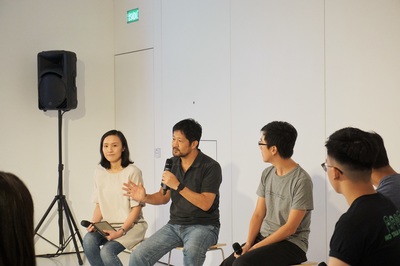Employee engagement is over. This is a better indicator
Here are five key behaviors of employees who create great work and how to encourage them.
As companies scramble to retain top talent and increase productivity in 2022, many will be looking to double down on employee engagement. They may be wasting money.
Despite billions of dollars spent trying to increase employee engagement, a recent Gallup study showed that engagement has grown on average by less than 0.5% per year over nearly two decades. Additionally, we found that employee engagement actually decreased by 18% from 2020 to 2021. Shouldn't organizations have more to show for their efforts?
OC's recent Tanner Institute study noted that engagement can be a flawed and misleading measure of effectiveness because it is not a measure of the quality and impact of the work product itself. As remote and hybrid work shifts the employer-employee balance, and mass resignations shift the balance of power, it's clear that even the best traditional measures of workplace activity may no longer apply. That's why we think companies will be better at adopting different metrics in 2022 and beyond. Let's measure "great work".
Defining "great work"
If "great work" gets the job done, then "great work" is exceptional, innovative, and groundbreaking. "Great work" looks different across industries, companies, and functions. Its definition must align with the company's overall goals.
While it's hard to assess whether great work is happening (aside from key milestone moments), we've identified five behaviors that clearly indicate when it's happening. By looking for these behaviors, leaders can tell if there is great work in their organization. What's more, leaders can significantly improve their Great Work Quotient by helping their employees develop behaviors they might not otherwise come naturally to.
Here are five key behaviors exhibited by high-performing employees:
They ask the right questions, like "How can this task/process/problem be made easier/faster/safer/better?"
They go to have a look, which could mean standing on an assembly line or watching a user interact with a product.
They speak to outside circles, gathering information and insights from a wide range of experts.
They refine the mix, constantly fine-tuning and improving their work.
They make a difference and still focus on positive results.
Five employee archetypes
To better understand what it takes to motivate and train individuals to do great work, we divided employees into five categories: socializers, builders, achievers, taskers, and roller coasters. Each group has unique needs, strengths and weaknesses. Everyone has different possibilities to demonstrate engagement and produce great work. Just as importantly, everyone has different requirements to improve their great job quotient.
Socializers are extroverted, motivated, and motivated by fun and rewards. They are only 12% likely to do a great job, but 55% likely to show engagement.
Builders are warm, friendly, emotionally intelligent, and sociable. They are 45% likely to do great work, 85% likely to show engagement, and they tend to be motivated by purpose, fun, and rewards.
Achievers are driven and energetic, but can be nervous and moody. Across all groups, they are most likely to do great work (66%) and demonstrate engagement (96%). Their motivations are fun, reward, and avoidance of punishment.
Taskers are generally quieter, more composed, and more resistant to feedback. They respond well to rewards, but not to pleasure or punishment. They have a 10% chance of doing great work and a 46% chance of being involved.
Roller coasters tend to be pessimistic and prone to stress. They appreciate rewards, seek to avoid punishment, and only have a 3% chance of doing a good job (and only 17% of showing engagement).
The idea behind these categories is not for leaders to categorize their employees, but to better understand their strengths and weaknesses so they can provide the right support. The most effective modern leaders watch their employees closely, adapting their management methods to help everyone develop and thrive. Leaders who understand employees recognize which employee roles apply to which team members.





Comments